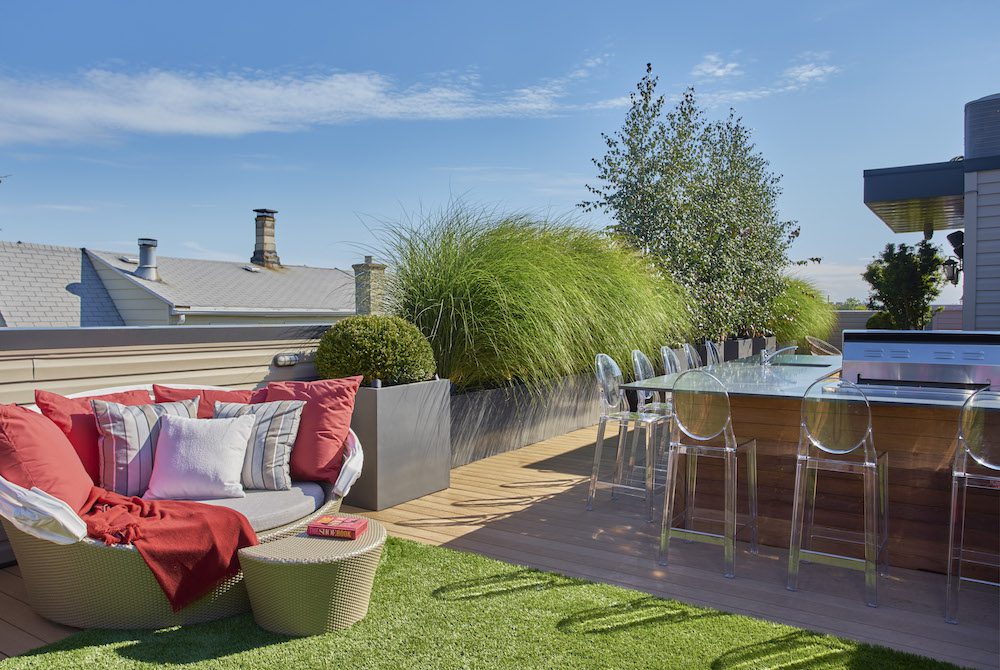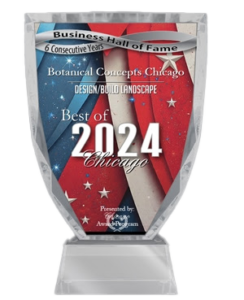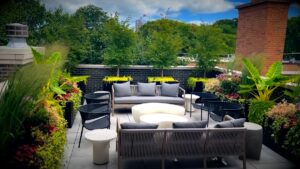
Rooftop gardening and landscaping benefits your building, environment, neighbors, and your bottom line. Still a relatively new concept in America, the green rooftop movement is booming in Europe and the results are in: green rooftops are amazing and beneficial in myriad ways:
Improved air quality
Plants improve air quality – they uptake carbon dioxide and release oxygen through their photosynthetic pathway. They filter pollutants and the more buildings with green rooftops in an urban setting, the better the overall quality of air in that neighborhood.
Storm water management
Rainwater is captured through specific design of your rooftop landscaping – and used as needed for your plantings. This feature reduces or eliminates wasteful runoff as well as prevents storm drain overflow during heavy rains or snow-melts.
Urban heat island effect mitigation
Temperatures in the concrete environments of inner cities has been shown to be significantly higher than that of neighboring rural communities – as much as 1-5 degrees Fahrenheit during the day and a staggering 22 degrees (F) difference at night. Many cities now combat the heat absorption of black tar and concrete islands with the cooling effect of plants; one of five major strategies currently being applied in cities nationwide includes green roof installations.
Noise reduction
According to a 2018 study in Belgium, vegetation has a sound dampening effect:
Improvements up to 10 dB were found in a wide frequency range, under dry conditions.
Plants add a type of insulation to your building and increase the level of comfort of the occupants.
Urban agriculture
Rooftop gardens not only provide nutritious food, they provide community – a place to convene and work together on a worthwhile past time. They also create a lovely setting to enjoy while communing with nature on the top of your building.
Higher savings on energy usage
The moderating effect of greenery on a building translates to financial savings. Because heat rises, most heat is lost from a building through its roof during the winter months, and due to heat absorption in typically black tarred roofs most heat is gained in the summer through the roof of a building. Both heating and air conditioning costs drop significantly in buildings with green roofs – in fact, studies have shown up to 75% energy savings from lowered air conditioning use alone.
Increased lifespan of roof
Green roofs extend the life of a roof by two to three times its normal lifespan, by virtue of providing a living membrane of protection. The longevity of roofs in Europe prove this – ‘living’ for 30 to 50 years.
Aesthetic design
The sheer beauty of a green roof is a gift in itself. A living, breathing, transpiring oasis on your roof provides a space of tranquility and shade in the middle of a concrete jungle.
Each building has its own requirements and personality, so to speak, and there are as many potential green rooftop designs as there are buildings – contact us for help in finding that perfect design for your rooftop needs.



